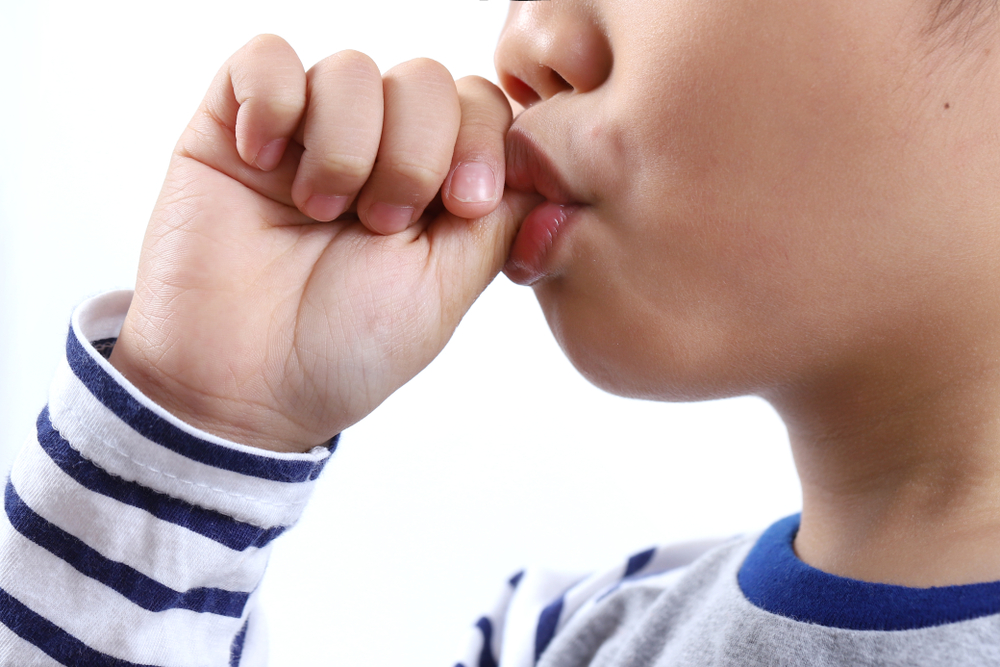
How Do You Treat Thumb Sucking in Children?
Thumb Sucking in Children
Thumb sucking is a normal reflex for babies and young children. Many kids suck their thumbs to feel comforted, help themselves fall asleep, or manage stress. This habit usually starts in infancy and can continue through the toddler years. Most children stop thumb sucking on their own between the ages of two and four.
When Is Thumb Sucking a Problem?
If a keeps sucking their thumb past age four, it is likely to affect how their teeth and jaws grow. The position of the thumb in the mouth can change how teeth line up and how the roof of the mouth forms. Over time, this may lead to an open bite or a gap between the front teeth.
If the habit continues past age four, it’s more likely to interfere with the normal growth of the upper jaw and teeth. This can make it harder for the child to bite or speak properly as they get older.
You’ll want to watch for changes in the way your child’s teeth come together. If their front teeth start to stick out or if their bite doesn’t close all the way, thumb sucking may be the cause. Dentists often notice early signs of these changes during regular checkups.
Thumb sucking can also create challenges for speech development. The position of the thumb against the palate can affect how your child forms sounds. If a speech pathologist raises concerns about unclear speech, thumb sucking could be part of the issue.
Acting early is the best way to prevent long-term effects because dental and speech problems tend to get worse over time.
What Are Problems Caused by Thumb Sucking?
Thumb sucking can lead to more than just crooked teeth. When the habit continues as your child gets older—especially after age five—it can affect the shape of the mouth, the position of the teeth, and even the way your child speaks. The pressure from the thumb changes how the upper jaw grows and how the teeth come together when the mouth closes.
These changes can interfere with eating, speech, and self-confidence. Many children aren’t aware of the physical effects at first, but as they grow, the changes become more noticeable. You might see gaps between teeth, changes in the bite, or a narrowing of the upper jaw. Speech issues may follow if the tongue and palate aren’t positioned correctly during development.
Along with physical changes, thumb sucking can also affect how your child feels about their appearance. Once school starts, other kids might point out the habit or comment on the way their teeth look. Some children may begin to feel embarrassed, which can affect their confidence.
Here are the most common problems caused by long-term thumb sucking:
- Open bite – The front teeth don’t meet when the mouth closes, creating a gap that can affect biting and speaking.
- Increased overbite – The upper front teeth are pushed forward more than normal, sometimes covering too much of the lower teeth.
- Upper jaw development issues – The thumb can alter how the upper jaw grows, leading to crowding or poor alignment of adult teeth.
- Speech difficulties – Changes in tooth and tongue position may lead to unclear speech or trouble pronouncing certain sounds.
- Changes in palate shape – The roof of the mouth may become narrow or high-arched, which can affect how teeth erupt and how the tongue moves.
- Social and self-esteem difficulties – Children may become self-conscious about their appearance or habits, especially if teased by others.
You can also see our full resource on
Problems Caused by Thumb Sucking and How To Treat Them
How Can You Treat Thumb Sucking?
Treating thumb sucking depends on your child’s age, how often they suck their thumb, and whether it’s already causing problems. Many young children stop the habit on their own as they get older. But if it continues past age four, or if it’s already affecting their teeth or speech, you may need to step in with a plan.
At Home
At home, you can guide your child toward stopping thumb sucking with calm, steady encouragement. The earlier you start talking to them about why it’s time to stop, the better. Many children respond to simple explanations, especially when you focus on how their teeth will grow or how the habit affects their smile.
You can use reward charts to track progress. For example, your child might earn a sticker for each day they don’t suck their thumb, and get a small reward after a few days of success. This builds momentum and shows them their efforts matter. Praise also goes a long way—acknowledge their progress often.
For night-time thumb sucking, you can try covering the thumb with a sock or soft bandage. You might also give your child a small stuffed toy or blanket to hold while they fall asleep, which gives their hands something else to do.
It’s important not to punish or shame your child for thumb sucking. Instead, stay patient and consistent. If your child is old enough, ask them how they feel about stopping and let them help come up with a plan. When they feel like it’s their choice, they’re more likely to stick with it.
With a Habit Breaking Appliance
If home strategies don’t work and the habit continues, your dentist may recommend a habit breaking appliance. These are custom-made devices placed in the mouth to make thumb sucking less comfortable and eventually help stop the habit altogether. They work best when your child is old enough to understand why the appliance is being used.
There are different types of appliances, including the Bluegrass appliance, palatal crib, and palatal rake. All of them are attached to the upper molars and rest near the roof of the mouth. These appliances don’t hurt, but they block the thumb from resting comfortably in the usual position. That interruption breaks the habit over time.
Your dentist will cement the appliance in place, so it stays in the mouth at all times. Most children wear it for three to six months. During this period, your child will come in for regular checkups—usually every six to eight weeks—to make sure everything is working properly.
Most children adjust to the appliance quickly. Speech might sound different for a few days, but it usually returns to normal. If your child has a speech therapist, they may continue working together during treatment.
The appliance acts as a constant reminder and helps your child stop the habit without needing to think about it all day. Once the thumb sucking stops and the appliance is removed, the positive changes in tooth and jaw development can continue naturally.
You can also read our guide on
Types of Habit Breaking Appliances and Their Cost
Kids Dental Group Can Help with Thumb Sucking
We understand that helping your child stop thumb sucking isn’t always easy. As parents, you want what’s best for your child’s health and development—but it can be hard to know when and how to step in. We’re here to guide you through every step of the process with support that’s practical, reassuring, and built around your child’s needs.
At Kids Dental Group, we’ve helped many families manage and stop thumb sucking—whether through at-home advice or with gentle, custom-made habit breaking appliances. Our team works closely with parents and children to find the right approach, with no pressure or judgment.
If you’re unsure about your child’s thumb sucking or you’ve tried everything at home without success, we invite you to contact us for a free consultation. We’ll take a look, answer your questions, and help you decide what to do next.
You can visit us at any of our four locations: Richmond Hill, Markham, Stouffville, or Hillcrest. We look forward to meeting you and helping your child grow up with a healthy, confident smile.
Contact us today
